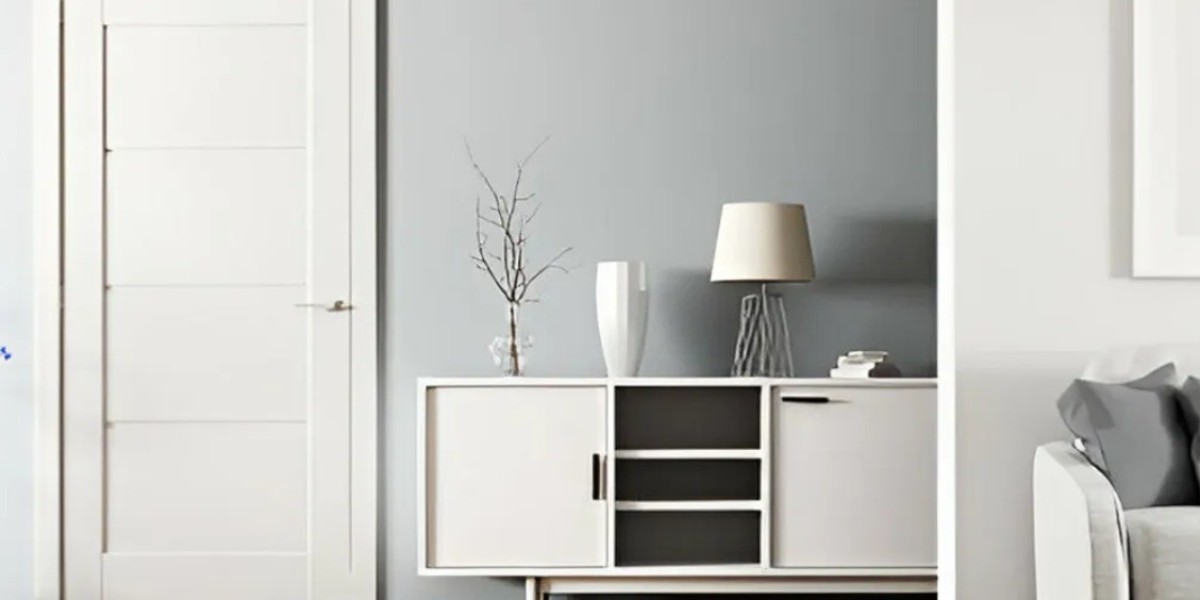In the journey of building or renovating a home in Canada, doors are often selected for their aesthetic appeal—the way a stately oak door complements a craftsman-style entrance or how a sleek, modern slab enhances a minimalist loft. However, beyond style and privacy, doors serve two critical, often overlooked functions: safety and structural integrity. Specifically, understanding the distinct purposes of Fire Rated Doors and Prehung Interior Doors is crucial for any Canadian homeowner, builder, or renovator aiming for a project that is not only beautiful but also safe, compliant, and built to last.
Part 1: Guardians of Safety: The Non-Negotiable Role of Fire Rated Doors
In a country with stringent building codes designed to protect its citizens from harsh climates and potential hazards, fire safety is paramount. Fire rated doors are not a luxury; they are a meticulously engineered component of a building's passive fire protection system.
What Exactly is a Fire Rated Door?
A fire rated door is an entire assembly—comprising the door itself, the frame, the hardware (hinges, locks), and the intumescent seals—that has been rigorously tested in a certified laboratory to withstand fire for a specified period. Common ratings in Canada are 20-minute, 45-minute, 60-minute, and 90-minute. A "60-minute" rating, for example, means the assembly must hold back fire and lethal gases for a full hour, providing occupants with vital time to escape and emergency services with time to respond.
These doors are constructed with non-combustible core materials, such as mineral wool, vermiculite, or solid timber blocks of a specific thickness, and are sheathed in steel or certified fire-resistant wood veneers.
Where Are They Legally Required in Canadian Homes?
The National Building Code of Canada (NBC) and provincial adaptations (like the Ontario Building Code or BC Building Code) mandate the installation of fire rated doors in specific locations to create "fire separations." These are barriers designed to compartmentalize a fire, slowing its spread. In a typical single-family home or townhouse, you will find legal requirements for fire rated doors in:
Between the Garage and the Living Space: This is the most common location in Canadian homes. A solid core door with a 20-minute rating is typically the minimum requirement. It acts as a crucial barrier against a vehicle or workshop fire entering the main house.
Furnace and Utility Rooms: Rooms containing fuel-burning appliances, like furnaces or water heaters, require a fire rated door to contain a potential fire at its source.
Protecting Exit Routes: In multi-unit residential buildings (like condos and apartments), fire rated doors are required in stairwells, corridors, and unit entranceways. In larger single-family homes, they may be required to protect the path to an exterior exit.
Key Features for Canadian Compliance:
Certification Labels: Look for the label from a recognized certification agency, such as ULC (Underwriters' Laboratories of Canada) or Warnock Hersey. This label, often found on the top edge of the door and sometimes on the frame, is your proof of compliance. A building inspector will always check for this.
Self-Closing Mechanisms: Fire doors must be self-closing. They are typically installed with a door closer or are equipped with spring hinges that ensure the door latches automatically every time it is opened.
Intumescent Seals: These are the most critical yet invisible components. These seals are installed in the door or frame and expand dramatically when exposed to heat, sealing the gaps around the door to prevent the passage of smoke and toxic gases, which are the leading cause of fire-related fatalities.
Choosing the Right Fire Door for Your Canadian Home:
While their primary function is safety, modern fire rated doors are available in a variety of finishes, including wood veneers that can be stained to match your interior décor and steel doors that can be painted. The key is to work with your architect, builder, or a knowledgeable door supplier to ensure the assembly you select meets the exact fire rating, size, and hardware requirements specified by your local building code.
Part 2: The Mark of Quality Installation: Why Prehung Interior Doors are the Superior Choice
While fire rated doors are about life safety, prehung interior doors are all about precision, efficiency, and a flawless final result. They represent a significant evolution from the traditional method of installing "slab" doors.
What is a Prehung Interior Door?
A prehung door is a complete system sold as a single unit. It includes:
The door slab (the actual moving part of the door).
The door frame (or jamb), already assembled with its three pieces.
The hinges, which are already mortised (recessed) into both the door and the frame.
The door stop (the trim piece the door closes against).
Often, a pre-cut hole for the latch and the door casing (trim) may be included or pre-attached.
In essence, the manufacturer and supplier have done the most complex and precise parts of the carpentry work for you.
The Undeniable Advantages of Going Prehung
Perfect Alignment: The biggest challenge of hanging a door is ensuring the hinges are perfectly mortised and aligned so the door swings smoothly without binding, sagging, or gaps. A prehung door eliminates this risk. The hinge alignment is factory-perfect, guaranteeing a consistent and reliable swing right out of the box.
Dramatically Faster Installation: Installing a slab door into an existing frame ("retrofitting") is a time-consuming process of shimming, chiseling, and fine-tuning. Installing a prehung door is a much quicker process of setting the entire assembly into the rough opening, leveling it, and securing it. This can save hours, or even days, on a whole-house project, translating directly into lower labour costs.
A New, Square Frame: Older homes, particularly in Canada's varied climates, can settle over time, leading to out-of-square door frames. Retrofitting a new slab into a warped old frame is a recipe for frustration. A prehung door brings its own new, perfectly square frame, solving this common problem and ensuring a crisp, professional look.
Ideal for New Construction and Major Renos: For builders, prehung doors are the standard because of their speed and consistency. For homeowners undertaking a significant renovation where walls are being opened up, prehung is the logical and superior choice.
Considerations for the Canadian Market:
Climate and Wood Movement: Canada experiences significant seasonal humidity changes. A solid wood slab door can expand and contract. The precision of a prehung unit, with its properly set gaps, is better equipped to handle this movement without sticking in the humid summer months.
Availability and Sizing: Prehung doors are readily available at major building supply stores across Canada (Home Depot, Lowe’s, RONA) in standard sizes. For custom sizes or unique historical home profiles, you may need to order from a specialty millwork supplier, which is common practice in both urban and rural renovation projects.
The "Slab Door" Alternative: The main scenario where a slab door makes sense is when you are replacing an existing door in a perfectly good, square, and undamaged frame, and you want to reuse the existing hardware and hinges. This is a more common DIY-friendly project for a single door update.
Bringing It All Together: A Cohesive and Compliant Home
Understanding the distinct roles of these two types of doors allows you to make informed decisions. Your home is an ecosystem where safety, structure, and style must coexist.
In Your Planning: You will specify prehung interior doors for your bedrooms, bathrooms, and closets for their ease and quality. Simultaneously, you will specify a certified, prehung fire rated door assembly for the door leading from your house to the attached garage.
During Installation: A general contractor will coordinate the delivery of all prehung doors, ensuring the fire rated units are clearly identified and installed with their required self-closing hardware and that their certification labels remain intact for the final building inspection.
In Your Final Result: The outcome is a home that is not only visually cohesive but also fundamentally safer. You enjoy the peace of mind that comes with knowing your family and property are protected by certified safety systems, all while appreciating the daily satisfaction of perfectly hung, smoothly operating interior doors.
In conclusion, when navigating your next building or renovation project in Canada, view doors as more than just passages between rooms. See fire rated doors as your silent, vigilant guardians, and prehung interior doors as the hallmark of quality craftsmanship. Investing in both is an investment in the long-term safety, integrity, and value of your Canadian home.








